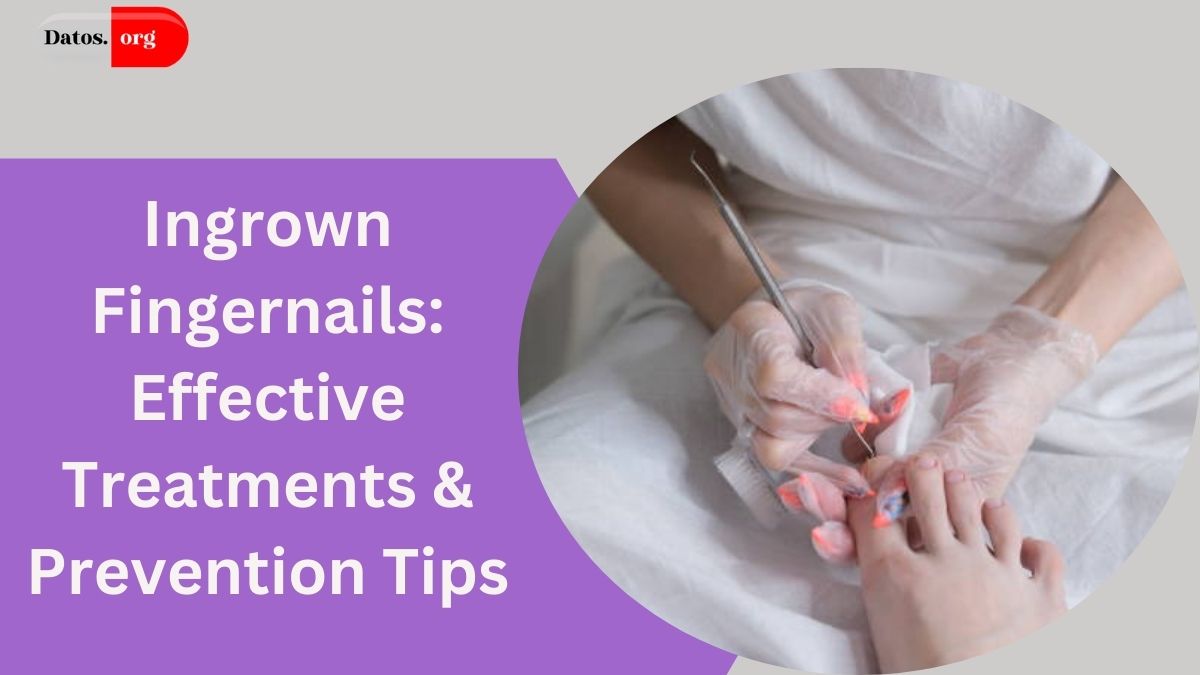An ingrown fingernail occurs when the edge or corner of a nail grows into the surrounding skin, often leading to pain, swelling, and potential infection. While more common in toenails, ingrown fingernails can make everyday activities like typing or writing uncomfortable.

What Causes Ingrown Fingernails?
Ingrown fingernails can arise from several factors, including:
- Improper Nail Trimming: Cutting nails too short or not straight across can cause them to grow into the skin.
- Injuries: Trauma to the nail, such as from stubbing a finger or getting a manicure, can alter nail growth.
- Frequent Hand Washing: Constant moisture can soften the nails, making them more prone to ingrowth.
- Genetics and Nail Shape: Some people are genetically predisposed to curved or thick nails, increasing the risk.
ALSO READ: Only These High-Protein Snacks Make You Healthier
Symptoms of an Ingrown Fingernail
Common signs include:
- Redness and swelling around the nail.
- Pain and tenderness at the nail’s edges.
- In severe cases, pus formation indicating infection (paronychia).
At-Home Treatments for Ingrown Fingernails
For mild cases without infection or severe pain, try these home remedies:
- Warm Water Soaks: Soak the affected finger in warm, salted water three to four times daily for 15-20 minutes to reduce swelling and soften the nail.
- Antibiotic Ointment: After soaking, apply an over-the-counter antibiotic ointment to prevent infection.
- Elevate the Nail: Place a small piece of wet cotton or dental floss under the ingrown edge to gently lift the nail away from the skin. Change this daily.
- Pain Management: Use pain relievers like ibuprofen or acetaminophen to alleviate discomfort.
Medical Treatments for Ingrown Fingernails
If home remedies DO NOT improve the condition or if the ingrown nail becomes infected, seek medical attention. A healthcare provider may recommend:
- Partial Nail Avulsion: This minor procedure involves removing the ingrown portion of the nail. Local anesthesia is used, and a chemical agent like phenol may be applied to prevent the nail from growing back into the skin.
- Prescription Antibiotics: If there’s an infection, especially with pus or severe pain, antibiotics may be prescribed to clear the infection.
When to See a Doctor
You should see a healthcare provider if:
- The pain worsens or does not improve with home treatment.
- There are signs of infection, such as increased redness, warmth, pus, or fever.
- You have underlying health conditions like diabetes, which increase the risk of complications from infections.
Preventing Ingrown Fingernails
Prevention is key to avoiding the discomfort of ingrown nails:
- Proper Nail Trimming: Always trim nails straight across without rounding the corners. Avoid cutting them too short.
- Moisturize Nails: Keep nails and cuticles hydrated to maintain their strength and prevent splitting.
- Wear Gloves: Protect your hands from frequent exposure to water or chemicals by using gloves.
Conclusion
Ingrown fingernails, while common, can usually be managed with proper nail care and at-home treatments. Recognizing the symptoms early and taking preventive measures can help avoid painful complications. For persistent or severe cases, consult with a healthcare provider to explore medical treatment options, ensuring a swift recovery.
For detailed, personalized advice, always consult with a healthcare professional, especially if you have conditions that affect circulation or immune response.
For more detailed guidance and medical advice, you can refer to sources like Verywell Health.

I am a passionate technology and business enthusiast, constantly exploring the intersection where innovation meets entrepreneurship. With a keen eye for emerging trends and a deep understanding of market dynamics, I provide insightful analysis and commentary on the latest advancements shaping the tech industry.